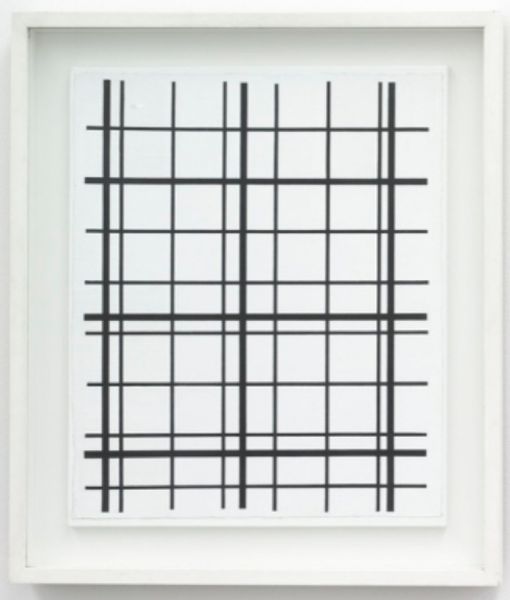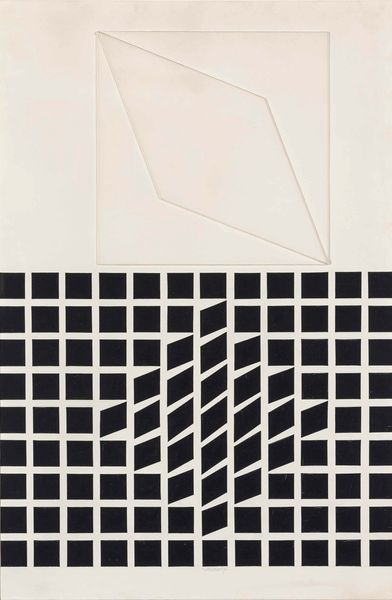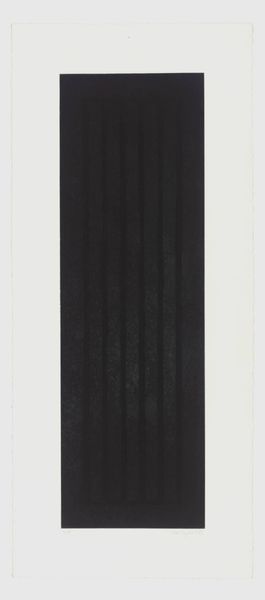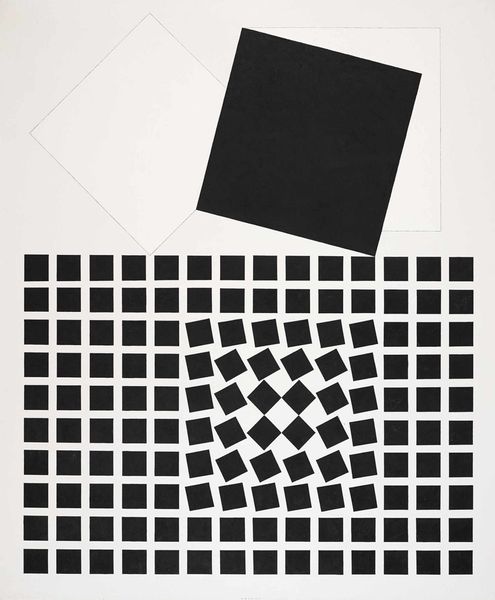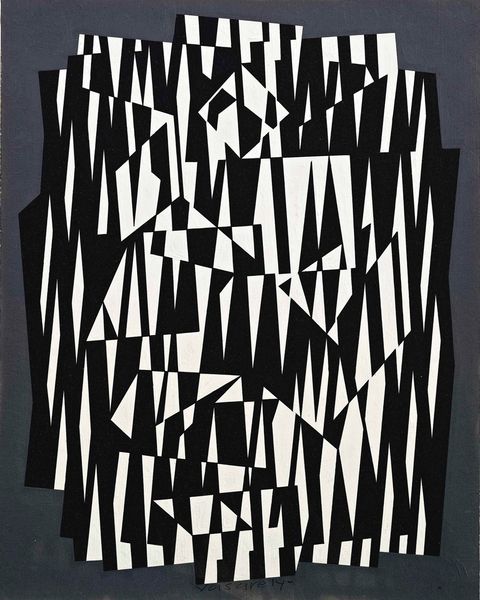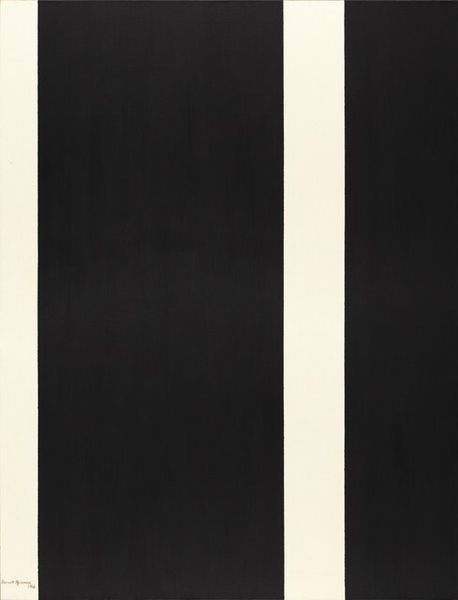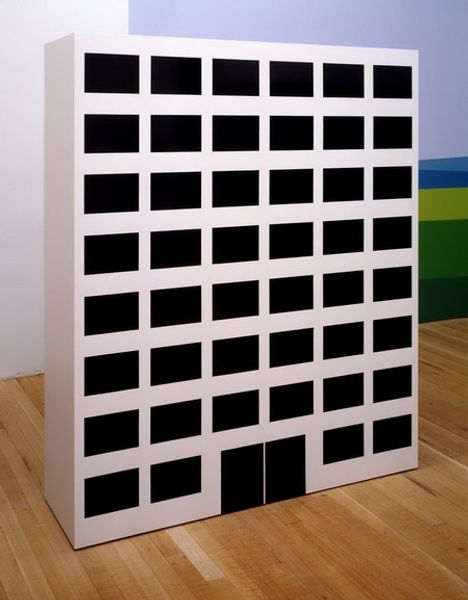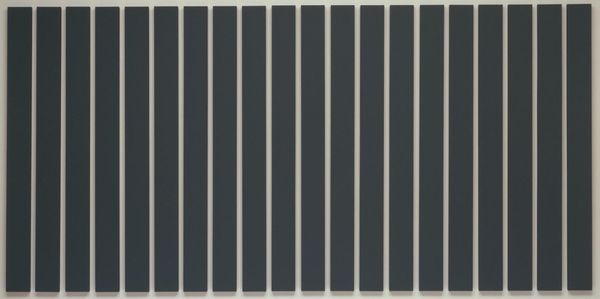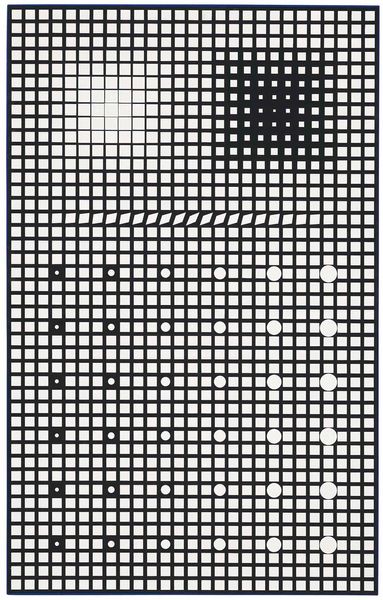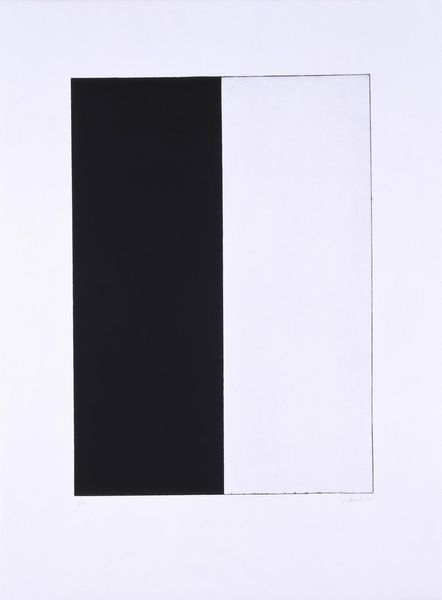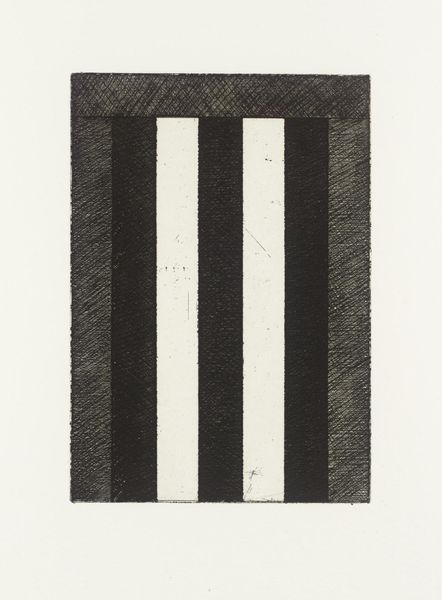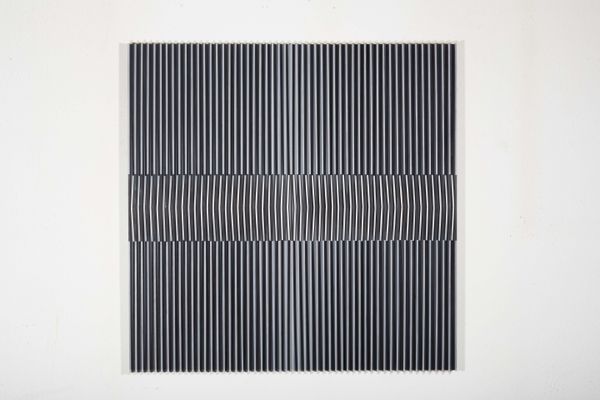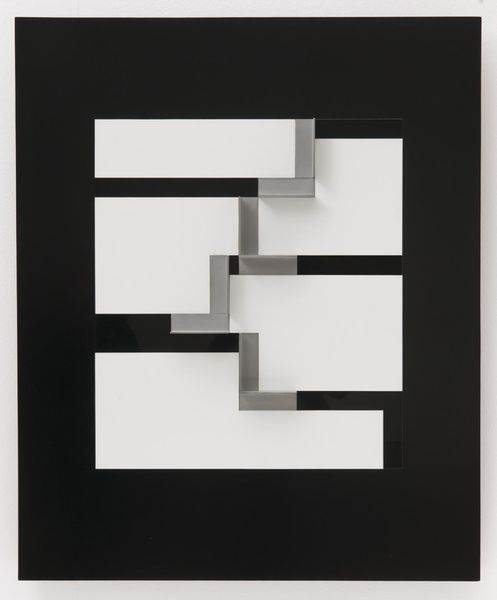
acrylic-paint
#
minimalism
#
acrylic-paint
#
geometric pattern
#
minimal pattern
#
geometric
#
abstraction
#
line
#
modernism
#
hard-edge-painting
Dimensions: image: 115.5 x 68 x 0.3 cm (45 1/2 x 26 3/4 x 1/8 in.) mount: 91.5 x 61 x 2 cm (36 x 24 x 13/16 in.)
Copyright: National Gallery of Art: CC0 1.0
Curator: My first thought is that it's stark and imposing. Like looking into a minimalist void. Editor: I see something of an architectural study in Mel Bochner’s work, called Convex Perspective, which he worked on from about 1967 to 1991. Bochner’s executed this optical play using acrylic paint. Curator: The title suggests he's after something beyond simple geometry. "Convex Perspective" implies a distortion of how we typically perceive space. It’s quite effective, I think. The repeated grid pattern… there's something almost hypnotic about it. It messes with your sense of depth. Editor: Agreed, the manipulation of the grid, and the way it almost seems to curve outward, creates an unnerving feeling. There’s the rigidity of Minimalism, and yet, that stark contrast between the black and white squares causes a perceptual push and pull. It invites the viewer to confront ideas on infinity and spatial awareness. It calls to mind ideas of urban planning and industrial design too. Curator: I find the simplicity of the color palette particularly striking. Black and white can be such loaded symbols, representing opposing forces or even fundamental duality in life and death. This makes the pattern even more unsettling. Is he exploring psychological binaries in this way? Or perhaps highlighting the fragile boundaries of modern human construction? Editor: It could very well be both. What Bochner has managed to pull off here is making something so sterile appear so alive. He doesn't leave the grid simply hanging there on the canvas. It really feels like it's pushing back at you. Curator: A visual echo, maybe. Perhaps he meant the grid as a metaphor for our desire to create ordered, understandable models, but, it always hints at our inherent uncertainty and vulnerability. Editor: Very compelling thoughts. This deepens our appreciation of its structural tension and its possible layers of meaning.
Comments
No comments
Be the first to comment and join the conversation on the ultimate creative platform.
